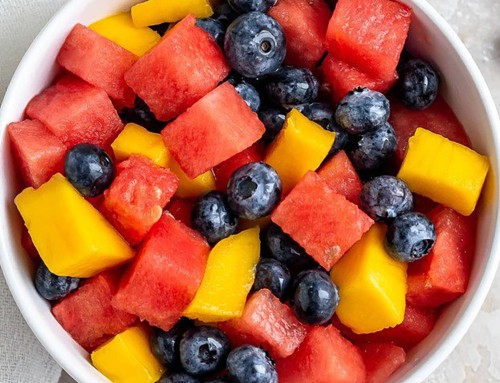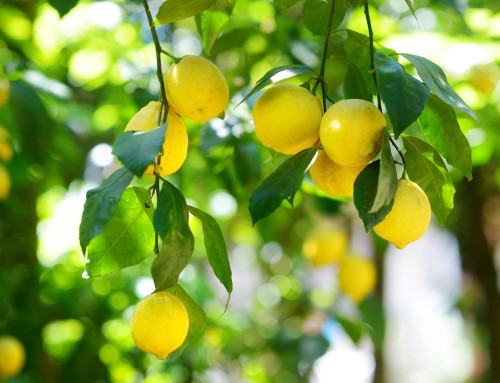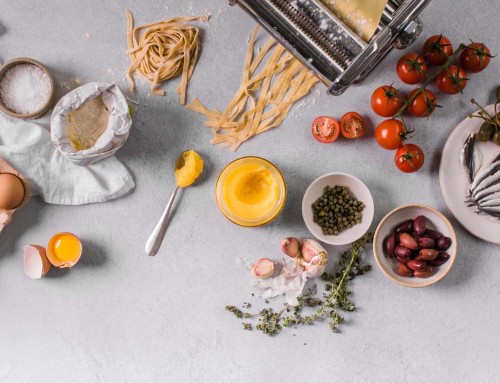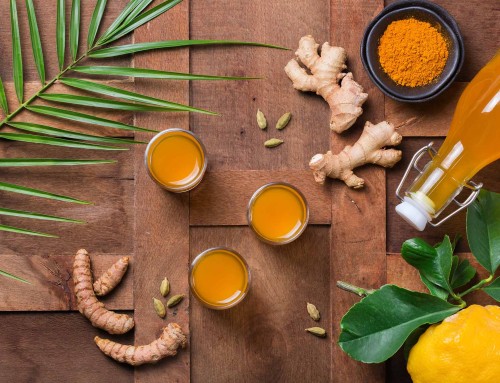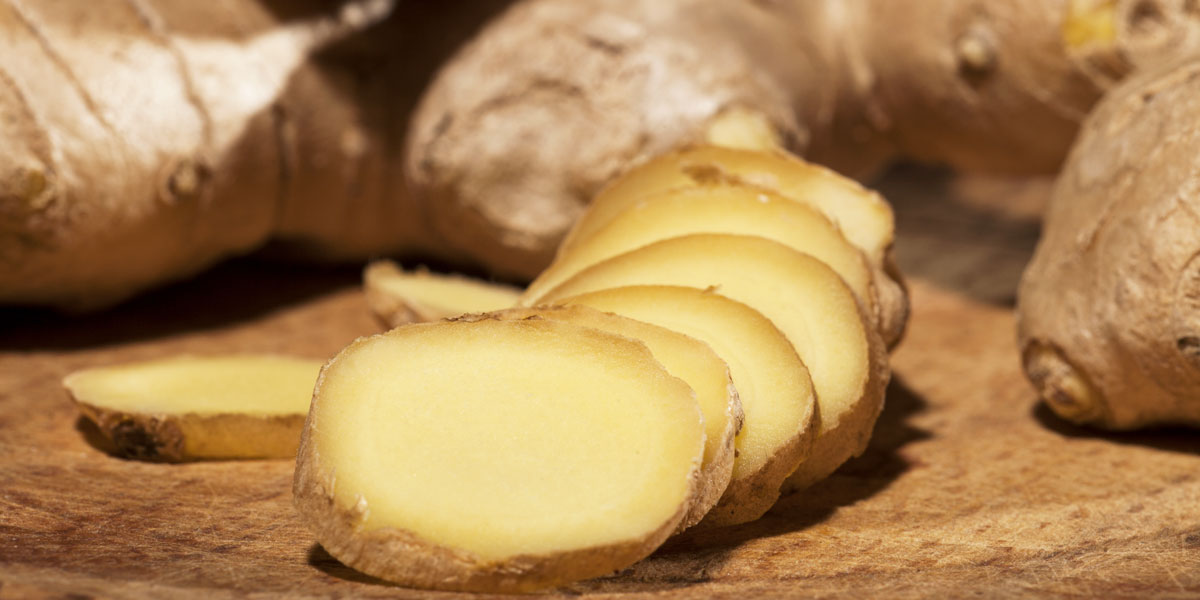
Ginger Apple Crisp
A tasty and easily digested desert. The recipe requires a 5 inch x 9 inch x 3 inch deep tray. If your own tray is either larger or smaller, proportionally adjust the quantity of each ingredient.
- 3 medium sized apples, peeled, seeded and chopped
- Fresh juice of 1 lemon or lime
- 1 tbsp of finely grated ginger
- 1 cup whole spelt, kamut or wheat flour
- 1 cup fine oat flakes
- ½ to ¾ cup raw sugar – coconut sugar or rapadura sugar are good choices
- ½ cup butter, ghee or coconut oil
- Pinch of salt
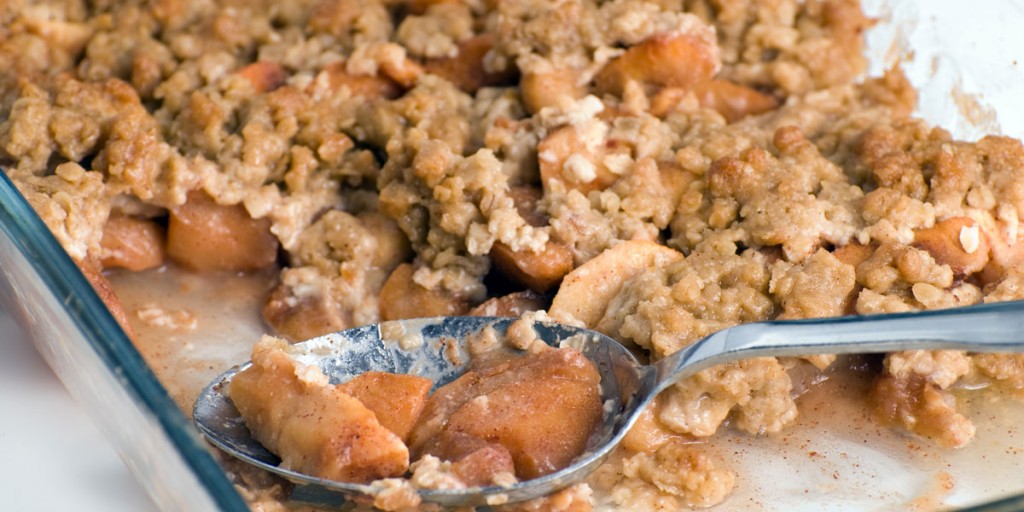
Combine the chopped apples, lemon juice and grated ginger in a medium sized pan. Bring the ingredients in the pan to a low simmer, cover the pan and continue ti simmer for 10 minutes.
Melt the butter, ghee or coconut oil in a pan then, in a mixing bowl, stir in the remaining ingredients to create a crumbly texture. Then start pre-heating the oven to 350°F/175°C.
Separate the bowl mixture into two equal portions. Press half of the mixture into a 5 inch x 9 inch x 3 inches deep baking tray. Make sure you get a smooth crust-like layer covering the bottom of the tray.
Remove the apple mixture from the heat and pour it over the layer of crust. Sprinkle the remaining crumble mixture on top of the fruit layer and bake at 350°F/175°C for 40 minutes. Bring out of the oven and leave to cool until the Ginger Apple Crisp has settled solidly into the pan. (Serves 6)
Ginger Lassi
A small glass of the following lassi is great to have with lunchtime meals. The ginger and cumin help with digestion and the yoghurt will help supply useful gut bacteria.
- ½ cup of organic full cream yogurt
- 1½ cups of warm water (not hot!)
- Pinch of rock or sea salt (Himalayan rock salt is best)
- ¼ tsp of dry ginger powder
- ¼ tsp of cumin powder
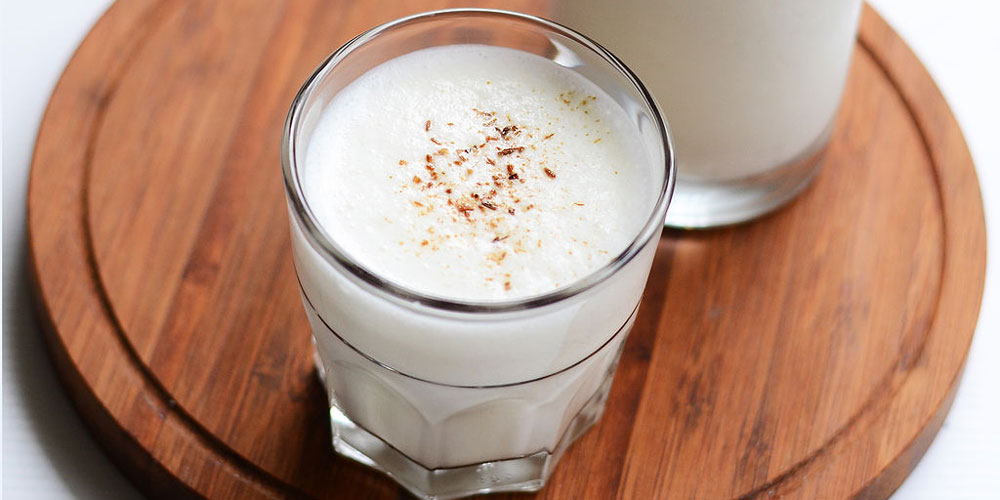
Pour the yogurt and water into a blender. Add the ginger, cumin and salt, then blend for a few seconds. Serve in a glass or cup. (Serves 6)
Ginger Tea
Ginger tea has a heating quality which makes it useful for balancing Vata and Kapha Dosha. Besides removing toxic Ama (the toxic by-product of weak digestion), it also improves all three phases of gastrointestinal function (digestion, absorption, and elimination). Ginger tea can increase Pitta Dosha, so avoid drinking large amounts if your Pitta is out of balance.
- Remove the peel from a 2 inch piece of whole ginger, then chop it into small pieces
- Place the chopped ginger in a pan with 1.2 litre of water and bring to the boil
- Reduce the heat, cover the pan and simmer for 15 minutes
- Take off the heat, strain the resulting ginger tea and store in a flask
- Sip the hot ginger tea throughout the day
- You can add a little fresh lemon juice to each cup.
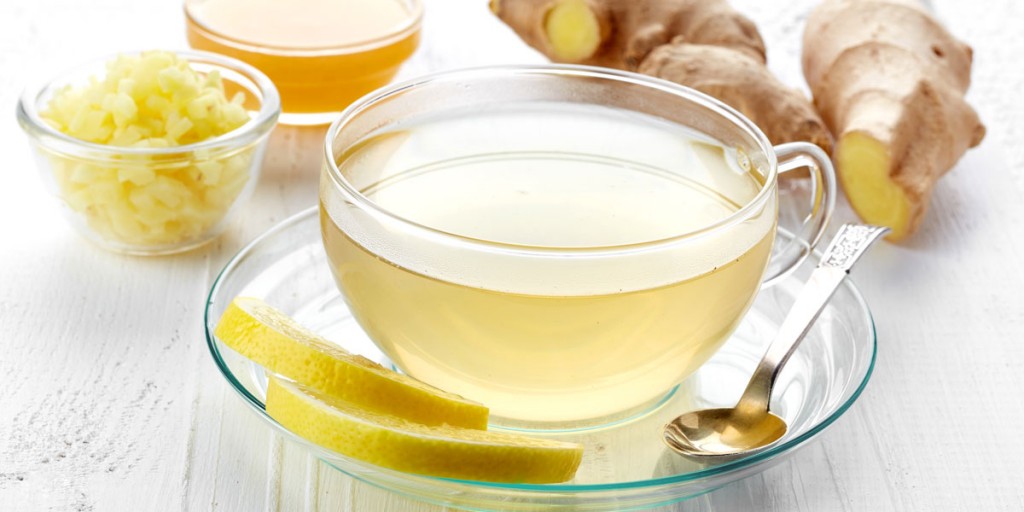
Raisin and Ginger Chutney
This chutney is useful way to stimulate digestive fire (Agni).
- 150g raisins
- 2 tbsp hot water
- 1½ tsp finely grated ginger
- ¼ tsp black pepper
- ¼ tsp of rock or sea salt (Himalayan rock salt is best)
- Juice of half a lemon or lime
Soak the raisins in hot water for 15 minutes then blend all the ingredients. Serve at room temperature. Can be covered and keep in a fridge for 1-2 days.
Ginger, Lemon, Honey and Salt Appetiser
A classic Ayurvedic recipe to prepare digestion before a meal.
- 2 inches of fresh ginger root
- Juice of 1 lemon or 1 lime
- 2 pinches of rock of sea salt
- Raw honey, to taste
Peel and grate the fresh ginger and place in a jar. Stir in the lemon or lime juice, the salt and the honey. (Adjust the quantity of salt and honey you use according to your own taste.)
Eat some ginger pickle just before meals as an appetiser or digestive aid.
This mixture can last for several days in a fridge without going off.
Video on the benefits of Ginger
Video transcript
“It’s always a little funny to me to look at some of the Ayurvedic herbs as supplements. For example, ginger is something that I grew up with as a part of my diet; and yet it has such amazing effects, I understand why people think of it as a supplement.
“Ginger is used for a variety of conditions. In Ayurvedic medicine it’s used to help with digestion; it’s also used to help reduce inflammation, and there are many Western studies now that are starting to support that. Ginger has been looked at for the treatment of dyspepsia, and even nausea associated with pregnancy – which often can be debilitating. It’s also been looked to for helping to treat several different types of inflammatory conditions.
“It’s so much a part of traditions in Asia and other parts of the world, part of their diet, that you can really feel comfortable about its overall safety. You’re not taking something that has been extracted as a single agent in a plant and then concentrated into very, very high doses. You’re really taking something that should be a part of your diet, but if it’s not, you have an alternative way of incorporating it back in, so, it’s kind of — I look at ginger as nature’s helping hand.
“If we don’t have it in the fridge, you can at the very least have it in a bottle. Just like you would use ginger with your cooking, you can just add it into your daily routine after meals, and it will help you in maintaining a really healthy, strong digestion.
“Why is ginger so effective at helping with digestion and reducing inflammation? It’s because it helps to power what we call, in Ayurvedic medicine, Agni, or your digestive fire. Your digestive fire is really the powerhouse behind staying healthy. Digestion is such a key part of health in Ayurvedic medicine. Ginger, in a very natural, very gentle kind of way, just helps support that digestive fire without creating too much heat, but just the right amount of heat so that everything in your GI tract is getting broken down, absorbed, assimilated, and the toxins are being removed.”
– Dr Kulreet Chaudhary, Chief Medical Officer for New Practices, Inc.



